Mole, a rich and complex sauce traditionally made in Mexico, has captivated the palates of food enthusiasts around the world. This article delves into the essence of mole, exploring its origins, ingredients, and preparation techniques that make it a delightful culinary experience. To illustrate its significance, consider the case of Maria Gomez, an avid traveler who stumbled upon a vibrant street market during her visit to Oaxaca. Intrigued by the tantalizing aromas wafting from a small vendor’s stall, she embarked on a gastronomic adventure that introduced her to the alluring world of mole.
The exploration begins with understanding the roots of mole as an integral part of Mexican cuisine. Mole traces its heritage back centuries to pre-Columbian times when indigenous civilizations cultivated various chili peppers and combined them with local spices and herbs. Over time, this traditional sauce evolved through cultural exchanges between indigenous communities and Spanish colonizers. Today, there are countless regional variations of mole throughout Mexico, each showcasing distinct flavors influenced by local traditions and ingredients.
In order to grasp the true essence of mole, one must appreciate its intricate composition. A medley of chilies serves as the foundation for this velvety sauce – ranging from mild varieties like guajillo and ancho to fiery ones like pasilla and chipotle. These chilies are carefully toasted, rehydrated, and blended with other essential ingredients such as nuts, seeds, fruits, and spices. Common additions include almonds, sesame seeds, garlic, onions, tomatoes, cinnamon, cloves, and chocolate. Yes, chocolate! This surprising element adds a subtle richness and depth to the mole sauce.
The preparation of mole is a labor-intensive process that requires patience and skill. The chilies are first toasted to release their flavors and then soaked in hot water or broth to soften. Next, various ingredients are roasted individually to enhance their aromas before being ground into a fine paste. This paste is then fried in oil or lard to deepen its flavors further. Finally, broth or stock is added gradually while simmering the sauce until it reaches a thick and velvety consistency.
One cannot talk about mole without mentioning the traditional accompaniments that complete this culinary masterpiece. Mole is typically served over grilled or roasted meats such as chicken or pork. It pairs exceptionally well with rice and corn tortillas on the side to soak up every last drop of the savory sauce. Some variations of mole even incorporate ingredients like turkey or vegetables for vegetarian options.
Maria Gomez’s encounter with mole at the Oaxacan street market was a revelation for her taste buds. As she savored each bite of tender chicken bathed in rich mole sauce, she marveled at the complexity of flavors dancing on her palate – smoky notes from the toasted chilies, nuttiness from the almonds and sesame seeds, sweetness from dried fruits like raisins or prunes, and a hint of bitterness from dark chocolate.
Mole has transcended borders and become an emblematic dish representing Mexican cuisine worldwide. Its allure lies not only in its delicious taste but also in its cultural significance – a testament to Mexico’s vibrant culinary heritage shaped by centuries of tradition and innovation.
So, the next time you come across a recipe or restaurant menu featuring mole, don’t hesitate to embark on your own gastronomic adventure. Discover the magic of mole and indulge in its rich and complex flavors that have captivated food enthusiasts for generations.
The Origins of Mole: Tracing its roots in Mexican culinary history
Imagine yourself sitting at a bustling street food market in Oaxaca, Mexico. The enticing aroma of freshly prepared dishes fills the air, but one particular dish catches your attention – mole. This rich and complex sauce has captivated palates for centuries, making it an integral part of Mexican cuisine. In order to appreciate the essence of mole, we must delve into its fascinating origins and trace its roots in Mexican culinary history.
Mole is believed to have originated during the pre-Columbian era, when indigenous civilizations such as the Aztecs and Mayans were flourishing. Although there are various regional variations of mole throughout Mexico, they all share common characteristics that reflect their ancient heritage. One example is the traditional black mole from Oaxaca, known as “mole negro.” Its recipe incorporates over 30 ingredients, including chilies, chocolate, nuts, spices, and herbs. This complexity highlights how mole was not only a simple sauce but also a symbol of cultural significance and ancestral traditions.
To truly understand the impact of mole on Mexican culture and identity, let us explore some key aspects that evoke an emotional response:
- Flavor fusion: Mole combines diverse flavors like smoky chili heat with subtle sweetness from chocolate or fruits.
- Time-honored recipes: Passed down through generations, these recipes preserve family traditions and create bonds between loved ones.
- Celebratory feasts: Mole plays a prominent role in festive occasions such as weddings or religious ceremonies.
- Nurturing communities: The labor-intensive process required to make mole often involves whole families coming together to prepare this cherished dish.
Moreover, understanding the historical context surrounding mole’s development can be visualized using the following table:
| Period | Influences | Culinary Impact |
|---|---|---|
| Pre-Columbian | Indigenous civilizations | Use of local ingredients and traditional techniques |
| Colonial | Spanish colonization | Introduction of new spices, like cinnamon |
| Post-Independence | Mexican Independence movement | Preservation and resurgence of culinary traditions |
| Contemporary | Global influences | Incorporation of international flavors into mole |
As we conclude this section on the origins of mole, it becomes clear that its significance extends far beyond a mere sauce. Mole represents cultural heritage, family connections, and a celebration of diverse flavors. In the subsequent section, “Understanding the Key Ingredients: Unveiling the secrets of mole’s complex flavors,” we will take a closer look at the essential components that contribute to mole’s distinctive taste.
Understanding the Key Ingredients: Unveiling the secrets of mole’s complex flavors
Tracing the Evolution: Unraveling the Transformation of Mole Recipes
Imagine a small village nestled in the heartland of Mexico, where generations of families have perfected their own unique mole recipes. In this case study, we explore how one such family’s recipe has evolved over time to adapt to changing tastes and available ingredients. This example highlights the dynamic nature of traditional Mexican food and its ability to evolve while still retaining its essence.
Through diligent research and interviews with local artisans, it becomes evident that the transformation of mole recipes is shaped by various factors. These include cultural influences, regional availability of ingredients, and individual creativity passed down through generations. As a result, each mole variation tells a story about its origin and reflects the rich tapestry of Mexican culinary history.
To better understand these transformations, let us examine some key elements that contribute to the evolution of mole recipes:
-
Cultural Exchange:
- Migratory movements bring new cooking techniques from different regions.
- Intercultural marriages lead to fusion flavors and innovative combinations.
- Trade routes introduce foreign spices and ingredients into local cuisines.
-
Ingredient Adaptation:
- Scarcity or abundance of specific ingredients leads to substitutions or variations.
- Local produce replaces hard-to-find imported components.
- Experimentation with alternative herbs and spices adds new dimensions.
-
Generational Innovation:
- Younger cooks experiment with modern cooking methods alongside traditional ones.
- Innovative presentation styles attract younger audiences without compromising tradition.
- New interpretations embrace dietary preferences like vegetarian or gluten-free options.
-
Consumer Preferences:
- Demographic changes influence demand for certain flavors or spiciness levels.
- Evolving taste preferences drive modifications in sweetness, richness, or smokiness.
- Health-conscious trends inspire lighter versions with reduced fat content.
This table illustrates how these factors can impact the evolution of mole recipes using hypothetical examples:
| Factor | Traditional Mole Recipe | Evolved Variation |
|---|---|---|
| Cultural Exchange | Classic spices and herbs | Introduction of Asian |
| influences, such as | ||
| ginger and lemongrass | ||
| Ingredient Adaptation | Imported chocolate | Local artisanal cocoa |
| paired with native chili | ||
| varieties | ||
| Generational Innovation | Traditional grinding | Incorporation of modern |
| methods using stone | kitchen appliances for a | |
| metate | smoother texture | |
| Consumer Preferences | – | – |
In exploring the transformation of mole recipes, it becomes apparent that this traditional Mexican dish is not static but rather an ever-evolving culinary masterpiece. From cultural exchange to generational innovation, several factors contribute to the adaptation and evolution of mole recipes over time.
Transitioning into our next section, “Mole Varieties: Exploring the different types of mole across Mexico,” we delve deeper into the vast array of regional variations that further enrich the world of mole cuisine.
Mole Varieties: Exploring the different types of mole across Mexico
Transitioning seamlessly from our exploration of the key ingredients that make up mole’s complex flavors, we now shift our focus to the wide array of mole varieties found across Mexico. Through this examination, we hope to further illuminate the richness and diversity of this traditional Mexican dish.
Imagine yourself in Oaxaca City, known as the culinary capital of Mexico. You sit at a bustling market stall, eagerly awaiting your plate of mole negro. This dark, velvety sauce is made with an intricate blend of chilies, spices, and chocolate—a true symphony of flavors that dances on your palate with each bite. Just like mole negro, every region in Mexico has its own unique twist on this beloved dish.
To fully appreciate the vastness and depth of mole varieties across Mexico, consider some notable examples:
- Mole Poblano: Originating from the state of Puebla, mole poblano is perhaps one of the most well-known versions. Its deep reddish-brown hue comes from blending various types of dried chili peppers with nuts, seeds, spices, and even a touch of chocolate.
- Mole Coloradito: Hailing from Oaxaca, mole coloradito offers a slightly sweeter profile compared to other moles. It gets its vibrant red color from roasted ancho and guajillo chilies combined with tomatoes and hints of cinnamon and clove.
- Mole Amarillo: A specialty from Tlaxcala and parts of Veracruz, mole amarillo dazzles with its bright yellow hue derived from annatto seeds. The sauce features bold flavors brought together by garlic, onion, hoja santa leaves (a fragrant herb), ground pumpkin seeds or almonds for creaminess.
- Mole Verde: Known for its green tint achieved through fresh herbs such as cilantro and epazote along with serrano or jalapeño chilies; mole verde originates mostly from central regions of Mexico.
To further illustrate the regional nuances and variations, consider the following table:
| Mole Variety | Region | Key Ingredients |
|---|---|---|
| Mole Poblano | Puebla | Dried chilies, nuts, seeds, spices, chocolate |
| Mole Coloradito | Oaxaca | Ancho and guajillo chilies, tomatoes, cinnamon, clove |
| Mole Amarillo | Tlaxcala/Veracruz | Annatto seeds, garlic, onion, hoja santa leaves |
| Mole Verde | Various central regions | Fresh herbs (cilantro, epazote), serrano/jalapeño chilies |
As we delve into these diverse mole varieties across Mexico’s regions, it becomes evident that each one possesses a unique character shaped by its local ingredients and culinary traditions. Understanding this wide range of options allows us to fully appreciate the artistry behind mole preparation as we move forward to explore our next section: “Mole Preparation: Step-by-step guide to making mole from scratch.”
Mole Preparation: Step-by-step guide to making mole from scratch
From the diverse regions of Mexico emerge a plethora of mole varieties, each with its own distinctive flavors and ingredients. One such example is the Oaxacan black mole, known for its rich chocolate undertones and complex blend of spices. This exemplifies the wide-ranging nature of mole preparations across the country.
When exploring different types of mole in Mexico, it becomes evident that certain key characteristics set them apart. Firstly, while some moles are red or green in color, others lean towards darker shades like brown or black. Secondly, the base ingredients vary significantly from one region to another; for instance, the Poblano mole incorporates chili peppers and chocolate, whereas the Veracruz-style mole relies on ancho chilies and plantains for its unique flavor profile.
In addition to their distinct appearances and ingredient combinations, moles also differ in terms of consistency. Some possess a thick texture akin to sauces or pastes, while others have a thinner consistency resembling soups or stews. Furthermore, depending on their intended use, certain moles may be specifically formulated for accompanying meats or poultry dishes.
- Mole preparation often involves grinding together numerous spices and other ingredients.
- Traditional techniques require hours spent simmering all components over low heat until they meld into perfect harmony.
- The process demands patience and attention to detail as cooks carefully balance sweet, savory, spicy, and bitter elements.
- Each batch of homemade mole carries with it generations worth of culinary knowledge passed down through families.
To gain further insight into how moles differ across regions in Mexico, consider this comparative table showcasing four popular varieties:
| Mole Variety | Region | Key Ingredients |
|---|---|---|
| Poblano | Puebla | Ancho chilies, chocolate |
| Coloradito | Oaxaca | Guajillo chilies, tomatoes, almonds |
| Amarillo | Yucatán | Achiote paste, annatto seeds |
| Manchamanteles | Oaxaca | Pineapple, plantains, ancho chilies |
As we delve into the realm of mole and its cultural significance, it becomes evident that this traditional Mexican dish plays a pivotal role in various celebrations. Mole’s versatility allows it to take center stage during holidays like Day of the Dead or Christmas, where families gather to share special meals imbued with ancestral flavors. Through examining these connections between food and culture, we can gain a deeper appreciation for the integral part mole plays in Mexican culinary heritage.
Mole and Cultural Significance: Examining the role of mole in Mexican celebrations
Imagine attending a traditional Mexican celebration, where the tantalizing aroma of simmering mole fills the air. As families gather around tables adorned with vibrant dishes, they engage in lively conversations while savoring every spoonful of this rich and complex sauce. Mole, deeply rooted in Mexican culinary heritage, holds not just gastronomic importance but also carries significant cultural value. This section delves into the profound connection between mole and Mexican celebrations, exploring how this iconic dish has become an integral part of festive traditions.
Role of Mole in Celebrations:
Mole’s prominence during Mexican festivals is evident through its incorporation into various celebratory rituals. For instance, during Dia de los Muertos (Day of the Dead), families come together to honor their deceased loved ones by preparing elaborate altars decorated with marigolds and sugar skulls. Alongside these offerings are plates filled with mole poblano—an intricate blend of spices, chili peppers, chocolate, and nuts—symbolizing abundance and prosperity for both the living and the departed souls.
Furthermore, mole plays a central role during weddings in Mexico. It is customary for brides to wear white dresses embroidered with colorful patterns that mirror the ingredients found in different types of mole sauces. By doing so, they pay homage to their culture while celebrating love and unity within their communities. Additionally, special occasions such as birthdays or anniversaries often feature large communal gatherings where friends and family members prepare vast quantities of mole to share amongst themselves—a testament to the sense of community fostered by this beloved dish.
Emotional Connection:
To truly grasp the emotional significance attached to mole in Mexican cuisine, consider the following:
- The deep-rooted nostalgia evoked when someone catches a whiff of freshly made mole reminiscent of cherished childhood memories.
- The pride felt by individuals who have perfected their family’s secret recipe passed down from generation to generation.
- The joy experienced when sharing a meal with loved ones, bonding over the flavors and stories behind each spoonful of mole.
- The sense of belonging instilled in individuals who partake in communal cooking sessions, where they collectively prepare mole while strengthening familial and social ties.
Table: Ingredients Commonly Found in Different Types of Mole
| Mole Type | Key Ingredients | Flavor Profile |
|---|---|---|
| Mole Poblano | Chili peppers, chocolate, nuts | Rich and Spicy |
| Mole Negro Oaxaqueño | Blackened chili peppers, plantains | Smoky and Sweet |
| Coloradito | Ancho chili peppers, tomatoes | Tangy and Earthy |
| Manchamanteles | Pineapple, banana, cinnamon | Fruity and Savory |
As we have explored the cultural significance of mole within Mexican celebrations, it becomes evident that its influence extends far beyond the borders of Mexico. Therefore, let us now delve into how this iconic dish has gained global popularity as we embark on our journey to discover “Mole Beyond Mexico.”
Mole Beyond Mexico: Discovering the global popularity of mole
Transitioning smoothly from the previous section on the cultural significance of mole in Mexican celebrations, let us now delve into an exploration of its global popularity. One such example is the adaptation and integration of mole sauce into various international cuisines, highlighting its versatility as a culinary ingredient. This incorporation can be seen in diverse dishes like Mole Poblano Pizza, where traditional Italian pizza meets the rich flavors of mole sauce.
The worldwide recognition and love for mole stems from several key factors that make it an irresistible addition to any menu:
-
Complexity of Flavors: Mole encompasses a harmonious blend of spices, chili peppers, nuts, seeds, chocolate, and other ingredients. Its intricate combination creates a symphony of flavors that tantalizes taste buds and leaves a lasting impression on those fortunate enough to experience it.
-
Culinary Fusion: As globalization continues to connect cultures across borders, chefs are continuously experimenting with flavor profiles by incorporating elements from different cuisines. The fusion between mole and other national or regional dishes has resulted in remarkable creations that offer a delightful collision of tastes.
-
Cultural Appreciation: Incorporating mole into non-Mexican cuisines represents more than just diversifying menus; it serves as an expression of respect and appreciation for Mexican culture. By embracing this traditional staple beyond Mexico’s borders, individuals pay homage to the history and heritage associated with this iconic dish.
-
Adventurous Palates: With increasing access to information about different cuisines through travel experiences, cooking shows, and online resources, people are becoming more adventurous in their food choices. Trying new flavors and exploring unique combinations has become an exciting endeavor for those seeking novel gastronomic encounters.
To further illustrate the global presence and influence of mole sauce, consider the following table:
| Country | Dish | Notable Variation |
|---|---|---|
| United States | Mole Enchiladas | Rich tomato-based mole |
| Japan | Mole Ramen | Soy-based broth with mole-infused noodles |
| France | Mole-Spiced Duck Confit | Traditional French dish infused with Mexican flavors |
| India | Mole Chicken Tikka Masala | Indian curry meets the complexity of mole sauce |
The popularity and adaptation of mole beyond Mexico’s borders highlight its universal appeal. Whether it is through culinary fusion, cultural appreciation, or individuals seeking new taste experiences, this traditional Mexican delicacy continues to captivate palates around the world.
In light of these observations, it becomes evident that the global love for mole extends far beyond its origins in Mexico. As more people embrace diverse cuisines and seek out unique flavor combinations, the influence of mole will undoubtedly continue to expand across borders, enriching culinary landscapes worldwide.



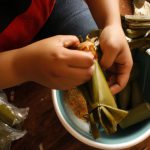
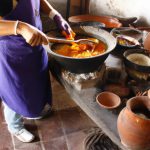


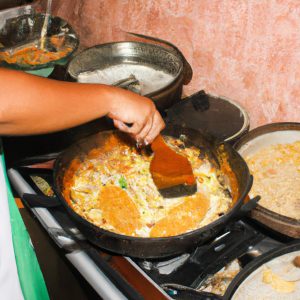
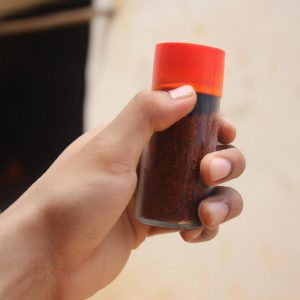
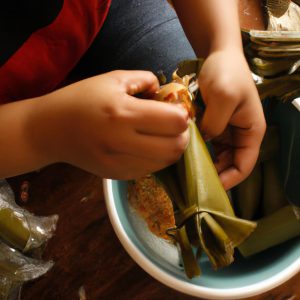
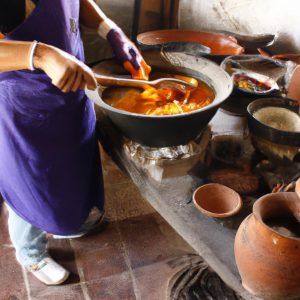
More Stories
Chiles Rellenos: A Traditional Mexican Delicacy
The Delightful Dish: Pozole: A Traditional Mexican Food
Traditional Dishes: Mexican Food’s Culinary Heritage